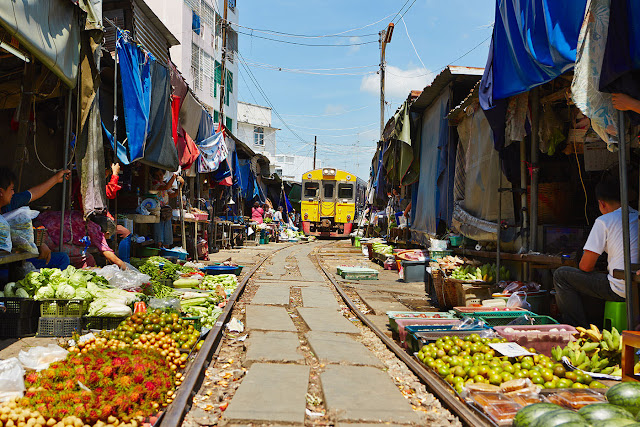Shintennoji Temple Market
Antique flea market in an idyllic setting The Shintenno-ji Temple is officially the oldest Buddhist temple in Japan and was built by Prince Shōtoku in 593 A.D. The temple hosts an antique market on the 21st and 22nd of every month. Around 100 sale tents are erected, offering goods from handbags, pottery and handicrafts all for incredibly low prices. Among the craft stores are food stalls serving delicious, warm local street food with authentic tastes. Admission to both the market and temple is free, so be sure to check out this beautiful sight.Kuromon Ichiba
Fresh local food market The Kuromon Ichibamarket, previously known as the Emmeiji market, is named after the black gate, which is situated north-east of the Emmeiji temple. The market is close to 600 meters long with 170 shops. The vast majority of shops specialize in the most fresh and best quality meat, vegetables, eggs and other ingredients used around the country. Most of the sales are made to businesses and professional chefs, but Kuromon Ichiba also caters to the public. Established for over 170 years, everyone has been drawn in by the taste, freshness and range of products.Shinsaibashi-suji
Shinsaibashi-suji is one of Osaka’s most popular shopping districts and like many places in Osaka, gets its name from the many bridges that are built around it. The street is home to hundreds of shops and restaurants, including well-known foreign brands such as Zara, H&M, Bershka and Forever 21. The shopping arcade ends at Dōtonbori Bridge and the famous neon lights of the Glico running man and the giant crab. Even if you aren’t in the mood for shopping, the area has a lot to offer on insight into the local fashion and food.Sennichimae Doguya-Suji
Famous shopping area Sennichimae Doguya-Suji is a well-known shopping arcade in Osaka. Within it is the Osaka Museum of Housing and Living, where you can dress in a kimono and experience a village in the Edo period. Many shops in the arcade sell famous Japanese snacks, from the huge variety of Kitkat flavors to the Glico brand. They sell souvenirs at a cheaper price than most tourist locations too. The arcade is also renowned for its sushi and you can get an assorted plate for just 500 yen, but there will be a queue.Korea Town Osaka
Situated near Namba, Korea Town is the dwelling and working place for many Koreans. The town has been developed with local Korean shops selling food, daily goods and even Korean-style clothing. The restaurants are mainly of the Yakiniku style, which is a cuisine of grilled meat over charcoal. The town has only been around for about 15 years and welcomes visitors and newcomers to come along and try the incredibly tasty foods and Korean cuisine.See more: Where to visit in Changwon, the city of art
Source: Internet

















































